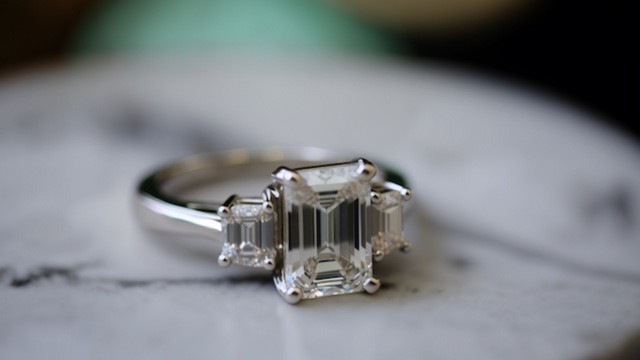Non-Traditional Engagement Rings: Say Yes To A New Trend
If a classic diamond solitaire feels wrong on your hand, you are not alone. More couples are choosing engagement rings that look like their real life style and values instead of what a jewelry ad says they should want.
This is where non-traditional engagement rings come in. Think bold color, unexpected stones, modern settings, and ethical choices that still feel luxe. The goal is simple: a ring that feels personal, wearable every day, and still looks incredible in every photo.
Let Your Personality Shine Through

If you want a ring that feels like your signature, not a copy of what everyone else is wearing, a non-traditional engagement ring gives you room to play. Maybe that means a deep blue sapphire, a dreamy morganite in rose gold, or a sleek band in an unexpected metal. The point is that the ring looks like your style and your story, not a default option in a case.
Actionable Tip Before You Ever Step Into A Jewelry Store
Save a small folder of ring photos you genuinely love, even if some are not engagement rings. Show that to your jeweler as a mood board for your personality.
Making A Statement With Ethics
If you already care where your coffee, clothes, or makeup come from, your ring will probably be no different. Lab-grown diamonds, conflict-free stones, and recycled metals let you say yes to a ring and still feel good about how it was made.
Key Takeaway
Decide early which matters most to you: price, sustainability, or rarity. That one choice will narrow your options in a good way and keep shopping from feeling overwhelming.
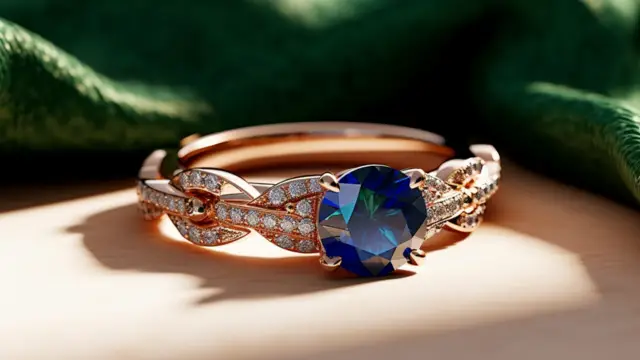
One-of-A-Kind Symbol of Love
Choosing an engagement ring is one of those rare decisions you will see on your hand every day. Non-traditional designs make that moment even more personal. When the stone, metal, and setting all feel like you, the ring becomes less of a trend and more of a wearable reminder of your story.
Pro Tip
As you try on different styles, check how the ring looks in natural light and in quick phone photos. You want something that feels good in real life, not only under bright jewelry store lights.
Why Choose Non-Traditional Diamond Engagement Rings
Non-traditional and non-diamond engagement rings have moved from niche choice to seriously popular for modern couples. The big reasons: personal style, better value, and clearer ethics.
- Color and personality
Sapphires, rubies, emeralds, and other stones bring in color and mood that a classic white diamond simply cannot. Perfect if you love vibrant fashion or want your ring to stand out in every photo. - Clearer ethics
Many couples prefer lab-grown stones, vintage pieces, or traceable mined gems so they know exactly what they are supporting. - Smarter budget
Often you can get more visual impact or a larger stone for less money with a non-diamond center, which frees up cash for the wedding or honeymoon. - Meaningful symbolism
Certain stones connect to culture, birth months, or family traditions. Choosing one can make your ring feel like part of a bigger story.
Types Of Non-Traditional Diamond Engagement Rings
Gemstone Rings
Non-traditional wedding ring stones are having a moment for a reason: they let you put personality front and center. Sapphires come in deep royal blue along with green, pink, and yellow, and they are tough enough for everyday wear. Rubies give that saturated red look and a touch of old-money drama. Emeralds bring statement-making green, especially in vintage-inspired settings.

Other favorites include:
- Soft blue aquamarine
- Romantic blush morganite
- Misty quartz in different shades
- Bright green peridot
- Pearls for a more delicate, fashion-forward look

If you want something truly unexpected, look at watermelon tourmaline, opals, garnets, or salt-and-pepper diamonds. Pink tourmaline and citrine bring warm, sunny color that feels fun yet still elevated.
Styling Hack
If you choose a softer stone like opal or pearl, pair it with a protective setting and treat it more like a special-occasion ring rather than a toss-it-in-your-bag piece.
Alternative Metals
Gold and platinum will always be classics, but alternative metals can completely change the vibe of your ring. Sterling silver gives a bright, clean look at a friendlier price point and still holds up well for everyday wear.
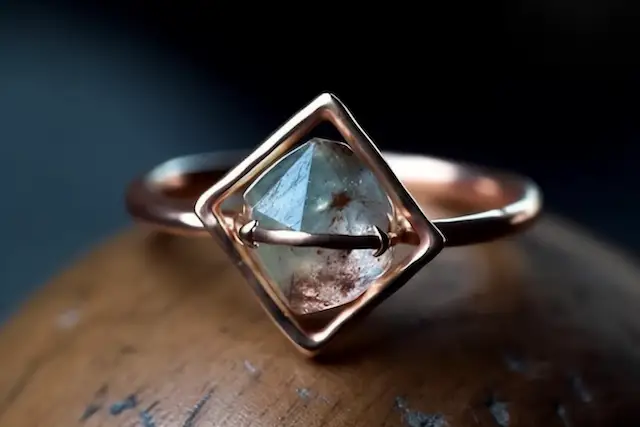
You can also ask about tungsten, titanium, stainless steel, or cobalt. These engagement ring metals bring different weights, colors, and levels of scratch resistance, and they are especially great for partners who are hard on jewelry or want something more industrial and sleek.
Actionable Tip
Tell your jeweler how you actually use your hands at work. A nurse, a chef, and a graphic designer all need very different levels of durability in a ring.
Unique Settings
The same stone can feel classic or very edgy depending on the setting. Asymmetrical layouts and cluster designs look modern and a little artsy. Three-stone rings let you mix colors or shapes while still feeling timeless.
Other unique settings include:
- Bezel settings that wrap the stone in metal for extra protection and a sleek outline
- Vintage-inspired designs with tiny details and engraving that feel romantic and heirloom-ready
- Hidden halos that tuck small stones under or around the center, adding sparkle from the side without taking over the look
Non-traditional diamond engagement rings offer a wide range of styles and materials, creating an opportunity for a unique and personalized ring design that reflects the love shared between two people.

Key Takeaway
If you want your ring to feel non-traditional without going wild on color, focus on an unexpected setting style and keep the stone more classic.
Popular Non-Traditional Engagement Rings Designs And Styles
Some of the most loved non-traditional designs simply swap the center diamond for a colored stone. Pearls, rubies, emeralds, and sapphires create a distinctive look and often stretch your budget further without sacrificing impact.
These stones look beautiful in various metals, such as warm yellow gold and cooler white gold, so you can match the metal to your wardrobe and skin tone while still choosing something that will hold up to everyday life.
Halo settings remain a favorite. A ring of smaller diamonds or gems around the center stone adds drama and can make the middle stone appear larger. You can pair a halo with almost any center stone. Yellow gold feels slightly warmer and vintage-leaning, while white gold reads more modern and crisp.
Pavé bands where tiny stones are set close together along the band give that full sparkle effect without needing a huge center stone. You can combine pavé with halos, colored centers, or solitaires in either yellow or white gold to get exactly the balance of shine and subtlety you want.
Styling Hack
If you work with your hands a lot, consider pavé on the top half of the band only so you get sparkle where you see it and fewer tiny stones in contact with surfaces.
Non-Traditional Celebrity Engagement Rings
Celebrity engagement rings are a master class in non-traditional choices. They are often bold, colorful, and deeply personal—which makes them a great starting point if you want something different but need a visual reference.
One famous example is the engagement ring of Kate Middleton, who wears a deep blue Ceylon sapphire surrounded by a diamond halo, a piece passed from Princess Diana. It is a perfect example of how a non-diamond center can still feel royal, classic, and iconic.
Another celebrity with a non-traditional engagement ring is actress Emma Stone. Instead of the conventional diamond, her ring features a round pearl in soft-toned gold—a reminder that even a delicate stone can make a strong style statement with the right setting.
Lily Collins showcased her unique taste with a blush morganite center stone engagement ring. Morganite offers a romantic alternative to a traditional diamond and has grown in popularity in recent years. It is proof that you can go all-in on a soft color and still have a ring that photographs beautifully for years.
Non-traditional diamond engagement rings can showcase a variety of designs and colors. Some celebrities who have opted for colorful stones include Elizabeth Hurley with a bold square-cut sapphire and Rebecca Romijn with a yellow diamond engagement ring. Both show that colored stones can feel expensive and editorial.
These alternative engagement rings not only make a statement but can come with practical benefits as well. Selecting a non-diamond center stone can sometimes result in a more affordable non-traditional engagement ring option without compromising style or quality.
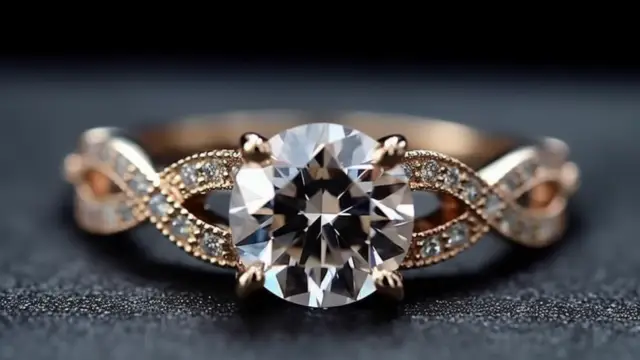
Ethical And Conflict-Free Diamonds
Ethical and conflict-free diamonds are now a core part of the conversation, not a niche. These stones aim to respect workers, protect the environment, and support local communities rather than simply moving product.
One option for ethically sourced diamonds is Canadian diamonds. They are mined under stricter environmental and labor standards and offer traceability that many couples find reassuring.
They may cost a bit more than less regulated stones, but the tradeoff is a clear supply chain and documentation that shows where your stone came from.
Another approach is choosing brands that track the entire journey of a stone from mine to finished ring. They focus on environmental standards, worker protections, and community support, not only avoiding funding conflict.
You can also choose recycled gold and reclaimed diamonds, which avoid new mining altogether. This is an especially good fit if you already love vintage fashion or secondhand shopping.
Some companies also offer engagement rings made with recycled gold and diamonds, minimizing the need for further mining. For example, Catbird produces its jewelry using recycled gold and diamonds and adheres to ethical practices in Brooklyn, New York.
As you shop, look for jewelers who clearly explain their sourcing practices, not just a single line saying “conflict-free.” The clearer they are about where their stones and metals come from, the easier it is for you to feel aligned with your choice every time you glance at your hand.
Actionable Tip
On a consult, ask directly: “Can you walk me through where this stone and metal come from?” A transparent jeweler will have a straightforward answer.
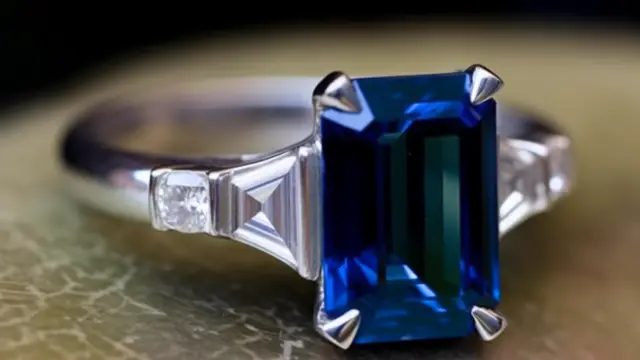
Purchasing Tips And Seller Recommendations
Shopping for a non-traditional ring can feel like a lot, but a simple plan keeps it from turning into decision fatigue.
First, if you are considering diamonds or diamond accents, a quick refresher on carat, cut, clarity, and color will help you compare options with less confusion.
Then move to design. Decide whether you want the ring to stand out through color, setting, or both. Many couples pick a colored center stone like sapphire or emerald and then keep the band more classic so the overall look still feels wearable long term.
Regarding where to buy non-traditional diamond engagement rings, online retailers like Etsy offer various unique options from independent sellers. Many Etsy sellers also offer free shipping, making the purchase process even more attractive.
Major cities like Los Angeles, New York, San Diego, and Washington D.C. also have local independent jewelers with diverse selections of non-traditional engagement rings. Seeing stones in person lets you compare sparkle, color, and comfort on your own hand.
When comparing sellers, look at more than price:
- Read reviews and check real customer photos
- Confirm how they handle resizing, repairs, and returns
- Ask how long they have been in business and where pieces are made
Here are a few recommended seller locations based on different cities:
Los Angeles
- Romantic, vintage-leaning studios with detailed craftsmanship
New York
- Boutiques with delicate, artsy designs and strong ethical positioning
San Diego
- Jewelers focused on custom work and personal consultations
Washington D.C.
- Longstanding local institutions with classic-meets-modern selections
Use local jewelers for in-person try-ons even if you ultimately order online.
Pro Tip
Before any appointment, set a realistic budget range and one or two non-negotiables (for example: “must be ethical” or “must have color”). It makes every conversation with a jeweler faster and clearer.
Frequently Asked Questions
Are Non-Diamond Engagement Rings Tacky?
No. Non-diamond engagement rings are not tacky. They are often more personal, more ethical, and more aligned with how modern couples actually live and spend.
For most of history, engagement rings were simple and often not diamond at all. The big diamond obsession is largely the result of marketing. That means choosing a sapphire, ruby, or any other stone does not say anything negative about your relationship—it simply says you picked something that fits your style and budget.
Old myths that say “a real ring must be a diamond” mostly come from companies selling diamonds. Your engagement ring should represent your love story, not a slogan.
Non-diamond rings also open up more playful shapes, metals, and engravings, which can make the design feel even more meaningful.
From a money perspective, buying a ring you can comfortably afford is a better long-term move than stretching to meet a diamond ideal that does not fit your life.
Many non-traditional rings also lean naturally toward lab-grown, vintage, or recycled materials, which can line up more closely with your environmental values.
Key Takeaway
The ring is a symbol. The love and the life you build are the real investment. Pick the piece that feels right for you, not for anyone else.
Is It OK To Get A Non-Diamond Engagement Ring?
Yes. Non-diamond engagement rings are more than ok—they are a smart, thoughtful choice for many couples. They can be more affordable, more sustainable, more personal, and often more fun to wear.
Rather than prioritizing expensive diamonds, couples are taking a creative route by choosing unconventional gemstones that represent their personalities and love stories. When it comes to engagement rings, there is no one-size-fits-all, so whichever stone you choose, make sure it resonates with you and your partner.
Pro Tip
If you ever feel judged for choosing a non-diamond ring, remember who is actually wearing it every day. As long as it feels right on your hand and in your relationship, you are already doing it right.


